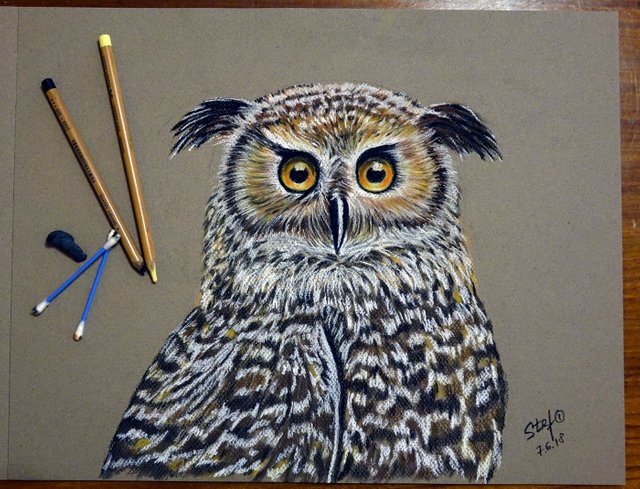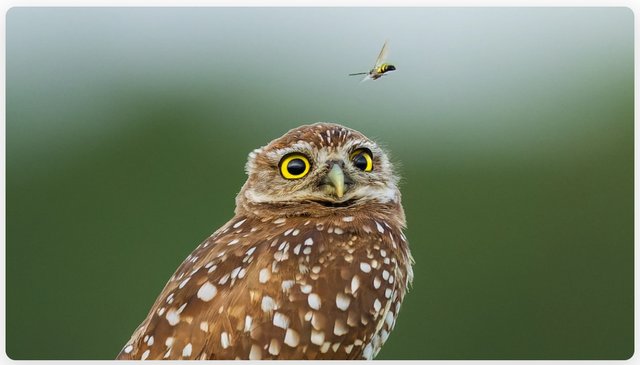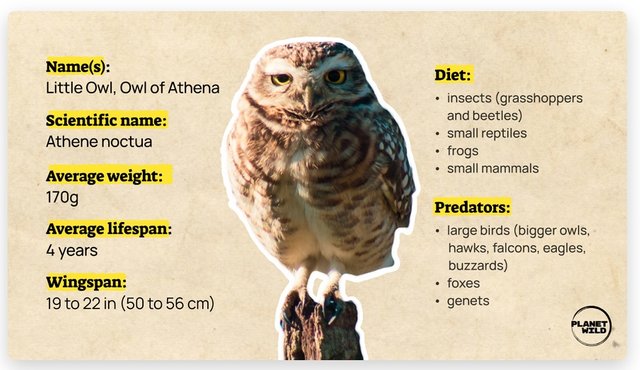
Hello my dear Steemians,
This is the new account “Planetwild” by @stef1 and @myskye. This account is about collecting Steem for the PlanetWild project. That's why I'm going to post once a day. Everything we get together here (Steem, SBD, SP) goes to the project. Then let's see what we can do here...
So... no photos for today, but maybe next time. Today it's all about a little bird that we've met before.
The Little Owl is a small owl species that is native to Europe, Asia, and parts of Africa. It is characterized by its compact size, distinctive facial disc, and yellow eyes. These owls are primarily active during the day and are known for their unique calls, which have been described as a repeating "tu-whit, tu-whoo". The Little Owl is a popular bird among birdwatchers and is often seen perched on branches or tree stumps, hunting for small prey such as insects, rodents, and small birds.

The owl is a common bird species found in Europe. There are several species of owls that can be found in Europe, including the Barn Owl, Tawny Owl, Little Owl, Long-eared Owl, and Short-eared Owl, among others. These different species have adapted to various habitats across the continent and can be observed in diverse environments such as forests, grasslands, and farmlands.
They are known for their distinctive appearance, including round faces, large eyes, and silent flight. They play an important role in the ecosystem as nocturnal predators, feeding on small mammals, birds, and insects. Overall, owls are a fascinating and important part of the European wildlife.



They're cute, they’re small, they’re fluffy. The Little owl is one of Europe’s most adorable birds... but in some areas it’s critically endangered. This is partly due to habitat destruction, agricultural practices and the prevalence of monocultures in our natural environment.

Little owls are native to parts of Europe, Asia, and northern Africa. Around 25% of their population lives in Europe. They can also be found in the British Isles and New Zealand but they are non-native to these regions. They were introduced during the late 19th century.
Their preferred habitat is open areas of ground with lots of nooks and crannies to make nests. That’s why they love orchards, bushes, tree-lined dirt roads, kettle holes, wetlands or flower-rich fallow lands. This is where insects and many other small animals tend to thrive, which is the owl's primary food source.






A beautiful bird, its appearance attracts our attention and reminds us people how important it is to protect nature. The owl is often a fairy-tale character in children's fairy tales; this bird has an attractive appearance and its own unusual character. We must thank nature for giving us so much beauty and diversity in wildlife. Thank you very much for the beautiful and gentle post. Good luck to you and good mood.
Downvoting a post can decrease pending rewards and make it less visible. Common reasons:
Submit
Thank you, friend!


I'm @steem.history, who is steem witness.
Thank you for witnessvoting for me.
please click it!
(Go to https://steemit.com/~witnesses and type fbslo at the bottom of the page)
The weight is reduced because of the lack of Voting Power. If you vote for me as a witness, you can get my little vote.
Downvoting a post can decrease pending rewards and make it less visible. Common reasons:
Submit
Hi @planetwild :)
Nice to connect with you!
I have always found owls really very fascinating and almost mystical and magical. There is just something about them. Some years ago there was actually a family of owls that nested in the plant tray which was hanging outside of my window upstairs. They came back every year for a few years to nest there but then one day there was some new building which was happening and they never came back. I was so sad!
Downvoting a post can decrease pending rewards and make it less visible. Common reasons:
Submit